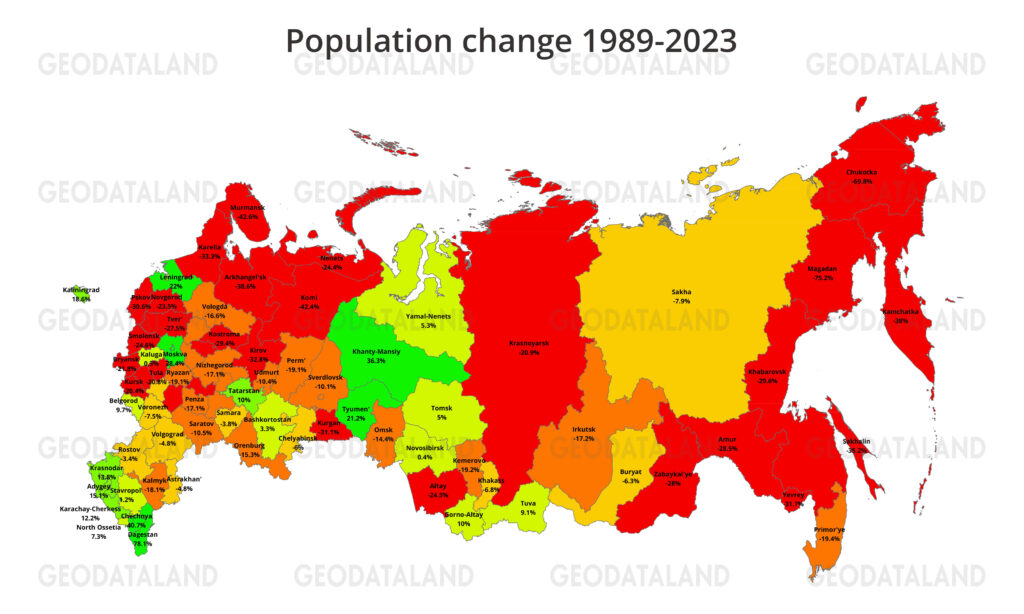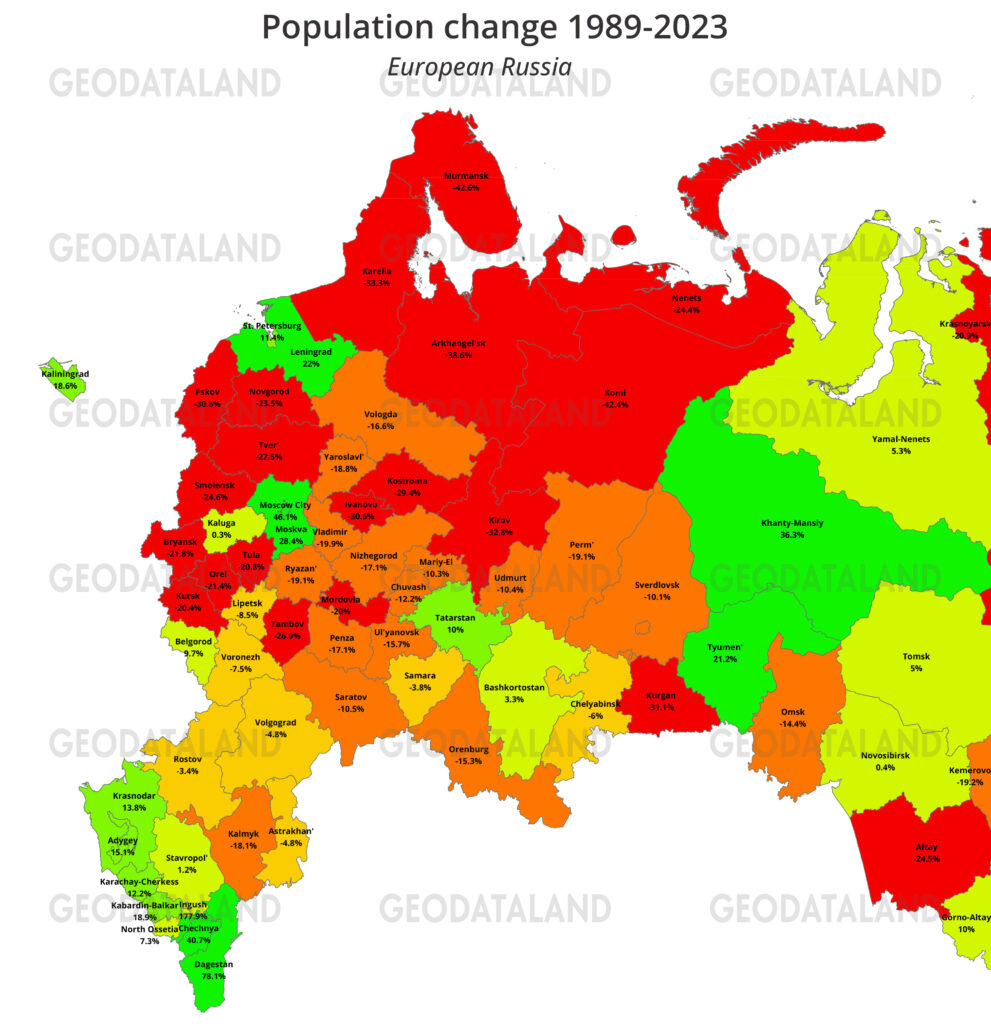Population change in federal subjects of Russia between 1989 and 2023. The last census in the Soviet Union was in 1989, and since then, population of the federal subjects of Russian Federation has seen some significant changes in their population. There are 83 federal subjects in Russia.
The population has clearly been shifting towards the two largest cities, Moscow and St Petersburg. The capital city of Moscow and the surrounding Moscow Oblast increased by over 40 and 20 percent, respectively. St Petersburg and the surrounding Leningrad Oblast increased by 11 and 22 percent, respectively. Another region with a positive population growth in the 1989-2023 period was Western Siberia, rich in oil and gas. The booming industry attracted more people to Tyumen Oblast, Khanty Mansy and Yamalo-Nenets autonomous okrugs. Also, a few regions with non-Russian ethnic groups have grown: Tatarstan, Bashkortostan, Tuva, Gorno-Altay and the Causasus republics. There is also a trend of regions in Southern Russia gaining population or having relatively small population loss: Krasnodar Krai, Stavropol Krai, Rostov Oblast, Volgograd Oblast etc. This could be attributed to a more favorable climate, in contrast with Siberia and Northern Russia.
On the other hand, many remote regions with harsh climate in Siberia and the Far East, also the Northern part of European Russia, have lost their populations. Magadan Oblast has lost 75 percent, Chukotka – almost 70 percent, Murmansk Oblast – by 42 percent, Komi Republic – by 42 percent.


Sources: 1989 Census, 2023 estimate